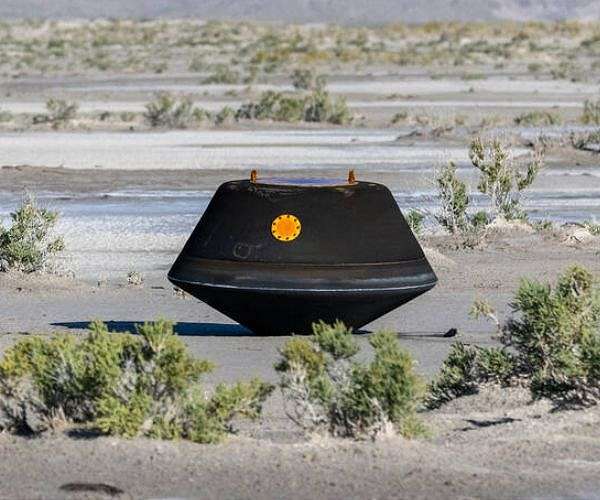28.09.2024

It's been a year since NASA's OSIRIS-REx spacecraft successfully delivered the largest-ever asteroid sample to Earth on Sept. 24, 2023.
Since then, intriguing clues about the early solar system and potential origins of life on Earth have emerged from study of the sample, under the leadership of OSIRIS-REx principal investigator Dante Lauretta, a Regents Professor of planetary sciences at the University of Arizona.
The successful delivery of 4.3 ounces (122 grams) of material from near-Earth asteroid Bennu marked a pivotal moment in space exploration. The mission collected more than twice the initial requirement of 2 ounces, or 60 grams, of the asteroid's surface material. Initial examinations of the material revealed crucial information about the asteroid's composition. Researchers identified significant quantities of carbon-based compounds and hydrated minerals in the sample, supporting hypotheses about the potential role of asteroids in bringing essential components for life to early Earth.
Scientists also discovered in the sample the presence of magnesium sodium phosphate, a specific phosphate mineral that did not get captured during remote sensing of the asteroid. This suggests that Bennu's origins may be more complex than initially thought. It also hints that the asteroid could have been born from a larger, water-rich celestial body.
While the majority of the asteroid material remains under careful curation at NASA's specialized facilities, portions have been allocated to key research institutions, including the U of A. Select museums across the U.S. now display fragments of the extraterrestrial material, as part of an initiative to encourage more public engagement with this scientific achievement. The U of A's Alfie Norville Gem and Mineral Museum is one of three places in the U.S. to showcase a piece of Bennu.
"The journey of OSIRIS-REx has surpassed our greatest expectations, thanks in large part to the dedication and insight of the students who have been at the heart of this mission," Lauretta said. "As a university-led project, we've been able to involve students directly in groundbreaking discoveries. These findings not only expand our scientific knowledge but also showcase the unique role a university can play in advancing space exploration, fostering a hands-on learning environment that prepares the next generation to lead the future of planetary science."
The OSIRIS-REx mission scope has expanded beyond its initial objectives. The spacecraft, now redesignated as OSIRIS-APEX, has embarked on a new mission to study near-Earth asteroid Apophis. This extended mission is led by Dani Mendoza DellaGiustina, an assistant professor at the university's Lunar and Planetary Laboratory. The OSIRIS-APEX mission aims to observe Apophis during the asteroid's close approach to Earth in 2029, which could provide unprecedented data on the interactions between near-Earth objects and Earth's gravitational field.
The study of Apophis holds particular significance for planetary defense strategies. As an asteroid representative of potentially hazardous near-Earth objects, Apophis could provide critical data for developing future planetary protection measures.
Following the Bennu sample return last year, the U of A also established the interdisciplinary Arizona Astrobiology Center to connect experts from multiple fields to collaborate on investigations into life's origins on Earth and its potential existence on other worlds. The center will also explore the relevance of discoveries about life's origins to different cultures and traditions around the world. The center recently received a $1 million gift from Eugene Jhong, a retired Google software developer turned philanthropist, to support its work.
Quelle: SD
